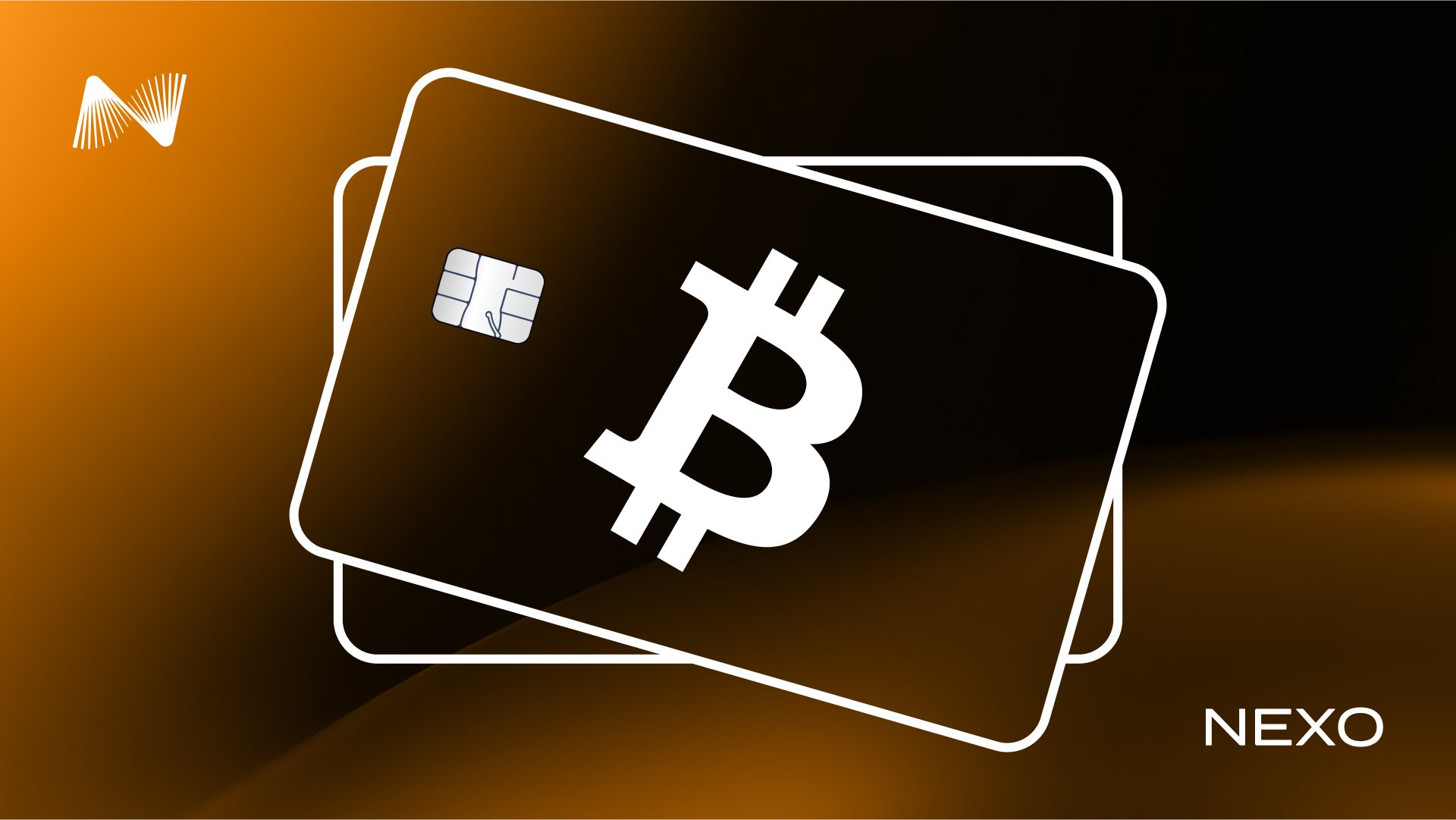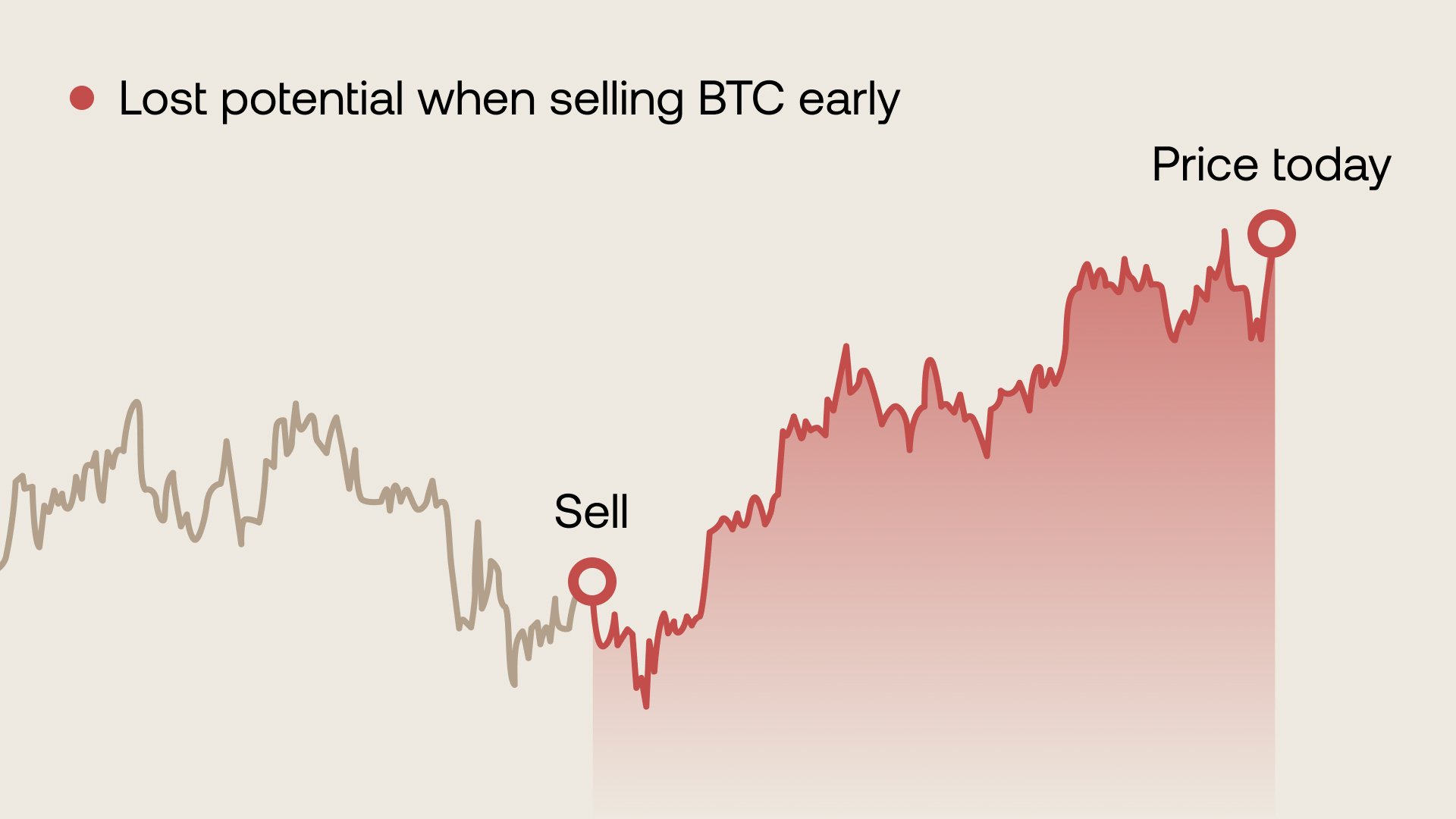Cartões de crédito cripto - Entenda
Oct 13•8 min read

Vender sua cripto toda vez que você precisa de dinheiro vai contra o propósito de mantê-la. Um cartão cripto de crédito resolve esse problema. Ele permite pegar emprestado contra seus ativos digitais, gastar em moedas tradicionais como dólares ou euros e ainda manter sua cripto investida.
O que é um cartão cripto de crédito?
Um cartão cripto de crédito funciona de forma muito semelhante a um cartão de crédito com garantia. Mas, em vez de imobilizar dinheiro, você usa criptomoeda como Garantia — os ativos digitais que garantem seu empréstimo.
Essa cripto permanece na sua conta; ela não é vendida. Ela fica apenas temporariamente bloqueada.
Ao fazer uma compra, o emissor do cartão empresta a você moeda tradicional, como USD ou EUR, ou stablecoins. Você está gastando esses fundos emprestados, não seu Bitcoin ou Ethereum. Depois que você paga, sua Garantia em cripto é liberada de volta para você.
É uma forma simples de acessar fundos sem abrir mão do seu investimento.
Pense assim: se você tivesse mantido seu Bitcoin desde 2017, o valor teria se multiplicado muitas vezes. Um cartão cripto de crédito ajuda você a gastar quando precisar, sem abrir mão de ganhos futuros.

Como funcionam os cartões cripto de crédito?
1. Vamos explicar o processo em termos simples.
- Comece registrando-se em uma plataforma como a Nexo.
- Você pode adicionar a cripto que já possui.
- Ou você pode adicionar fundos via sua conta bancária para comprar Bitcoin, Ethereum ou stablecoins diretamente na plataforma e usar isso como Garantia.
- Essa Garantia é o que dá suporte à Credit Line que você usará quando começar a gastar.
- A Credit Line é o Valor que você pode pegar emprestado contra sua cripto — basicamente, fundos que você pode usar a qualquer momento, desde que seus ativos permaneçam alocados.
2. A plataforma define seu limite de empréstimo usando uma medida chamada Relação Loan-to-Value (LTV), um índice.
- Isso significa: se você mantém US$ 100.000 em Bitcoin e seu LTV é de 50%, você pode pegar emprestado até US$ 50.000. Você sempre pega emprestado menos do que o total que mantém, para minimizar o impacto das oscilações de preço.
3. Você pode usar um cartão virtual para pagamentos online instantâneos ou solicitar um cartão físico para compras em lojas. Você também pode conectá-lo ao Apple Pay ou Google Pay para uso com pagamento por aproximação.
4. Passe ou toque o cartão em qualquer lugar onde Visa ou Mastercard são aceitos. O estabelecimento recebe moeda fiduciária enquanto sua cripto permanece intocada.
5. Aproveite pagamentos flexíveis. É aqui que os cartões cripto de crédito se destacam. Normalmente, não há data de vencimento fixa nem pagamento mínimo. Você escolhe quando e como pagar — com fiat*, cripto ou stablecoins.
6. Com cartões cripto de crédito como o da Nexo, você gerencia tudo por conta própria — sem precisar ligar para um banco ou ficar em espera para mudar limites ou bloquear seu cartão. Você pode definir limites de gasto, pausar ou reativar seu cartão instantaneamente e adicionar segurança extra com a autenticação de dois fatores.
Por que usar um cartão cripto de crédito?
Mantenha sua cripto trabalhando para você
Se você vende sua cripto toda vez que precisa de dinheiro, perde o potencial de valorização. Um cartão cripto de crédito mantém seus ativos enquanto você gasta, permitindo que você se beneficie de possíveis aumentos de preço.
Evite eventos tributáveis
Vender cripto geralmente acarreta imposto sobre ganhos de capital. Fazer empréstimo tendo-a como Garantia não aciona esse imposto, o que pode tornar essa abordagem mais eficiente.
Ganhe recompensas em cripto
Muitos cartões cripto de crédito recompensam você com ativos digitais em vez de milhas ou pontos de loja. Por exemplo, com o Nexo Card no Modo Crédito, você pode:
Ganhe até 2% em NEXO Tokens se você quiser o maior retorno.
Ou até 0,5% em Bitcoin se você preferir acumular BTC.
Aproveite o uso global
Você pode usar seu cartão cripto de crédito em qualquer lugar onde Visa ou Mastercard funcionam — online, em lojas ou por meio de carteiras digitais.
Riscos e considerações.
Os cartões cripto de crédito são ferramentas poderosas, mas você ainda precisa acompanhar os movimentos do mercado.
Digamos que você mantém US$ 100.000 em Bitcoin e pega emprestado US$ 50.000. Se o preço do Bitcoin cair 30%, o valor dos seus ativos mantidos em BTC cai para cerca de US$ 70.000.
Agora seu LTV sobe de 50% para aproximadamente 71%. Se continuar subindo e atingir cerca de 83,3%, você teria que pagar parte do empréstimo ou adicionar mais Garantia para reduzir o risco novamente.
Por isso, vale a pena pegar emprestado de forma conservadora — deixe uma margem de segurança caso o mercado vire.
Outros pontos para considerar:
- Taxas de juros: Elas variam conforme o provedor, o ativo e o Nível de Fidelidade. Com o Nexo Card, as taxas começam a partir de 2,9% se você for cliente do Nível Platinum e estiver gastando no Modo Crédito.
- Confiabilidade da plataforma: Sempre escolha uma empresa regulada e transparente.
Escolhendo o cartão cripto de crédito ideal.
Escolher o cartão cripto de crédito ideal depende de como você usa sua cripto e do que mais importa para você.
Relação Loan-to-Value (LTV)
Isso define quanto de crédito você obtém em comparação à sua Garantia. As plataformas geralmente atribuem LTVs menores a ativos mais voláteis para criar uma margem maior durante quedas de preço e LTVs mais altos a ativos mais estáveis.
Taxas de juros
Compare taxas base e variáveis. Mesmo uma pequena diferença se acumula com o tempo. A Nexo oferece taxas a partir de 2,9% ao ano, dependendo do seu Nível de Fidelidade e do LTV.
Flexibilidade no pagamento
Você pode pagar em fiat*, cripto ou stablecoins, sem cronogramas de pagamento fixos.
Ativos compatíveis
Garanta que seu cartão cripto de crédito ofereça suporte aos ativos de cripto que você realmente mantém — não apenas Bitcoin ou Ethereum.
Recompensas
Procure programas transparentes e consistentes. A Nexo oferece até 2% de cashback, pago em NEXO Tokens ou até 0,5% em Bitcoin, para que você decida como quer ganhar.
Transparência
Escolha um provedor que atue em conformidade com as regulamentações em nível global e local.
Principais pontos.
Os cartões cripto de crédito transformam seus ativos mantidos em crédito utilizável sem obrigar você a vender. Você faz empréstimo de fundos, mantém sua cripto investida e ainda ganha recompensas enquanto gasta.
O Nexo Card oferece até 2% de cashback no Modo Crédito, pagamentos flexíveis em fiat*, cripto ou stablecoins e uso global com Apple Pay e Google Pay.
Perguntas frequentes.
O que é um cartão cripto de crédito?
Um cartão cripto de crédito permite fazer empréstimos de stablecoins ou moeda tradicional usando seus ativos digitais como Garantia. Em vez de vender seu Bitcoin ou Ethereum, você abre uma Credit Line lastreada pelos seus ativos e paga depois em fiat, cripto ou stablecoins.
Como funciona um cartão cripto de crédito?
Você adiciona cripto à sua conta, que se torna sua Garantia. O emissor do cartão emite uma Credit Line com base na Relação Loan-to-Value (LTV). Você gasta moeda tradicional online ou em lojas enquanto sua cripto permanece bloqueada, mas não vendida. Quando você paga, seus ativos são desbloqueados.
O que é a Relação Loan-to-Value (LTV) em cartões cripto de crédito?
A Relação LTV mostra quanto você pode pegar emprestado em comparação ao valor da sua Garantia. Por exemplo, com um LTV de 50%, ter US$ 10.000 em Bitcoin permite pegar emprestado até US$ 5.000. Uma LTV mais baixa significa menor risco de liquidação se o mercado cair.
Posso pagar com cripto?
Sim. Com provedores como a Nexo, você pode pagar em fiat, cripto ou stablecoins, o que dá a você controle sobre quando e como quitar seu saldo em aberto. Os juros são cobrados apenas sobre o valor emprestado, não sobre todo o seu crédito disponível.
Cartões cripto de crédito oferecem cashback ou recompensas?
Sim. O Nexo Card, por exemplo, oferece até 2% de cashback em cripto nas compras no Modo Crédito. Você pode escolher o tipo de Prêmio:
- até 2% em NEXO Tokens para um rendimento maior
- até 0,5% em Bitcoin se você preferir ganhar recompensas em BTC
Essas recompensas funcionam como milhas aéreas ou pontos de loja, mas, em vez de descontos, você ganha ativos digitais de fato, que podem se valorizar.
Usar um cartão cripto de crédito é seguro?
Cartões cripto de crédito são, em geral, seguros quando emitidos por provedores regulados com sólidos sistemas de custódia e gestão de Garantia.
E se minha cripto cair de valor?
Se seus ativos mantidos caírem e seu LTV subir perto do limite (geralmente em torno de 80–85%), a plataforma pode pedir que você pague parte do que pegou emprestado ou adicione mais cripto como Garantia.
Posso usar um cartão cripto de crédito com Apple Pay ou Google Pay?
Sim. A maioria dos cartões cripto modernos funciona com Apple Pay e Google Pay. Isso permite fazer pagamentos por aproximação instantâneos em lojas ou online.
Cartões cripto de crédito impactam minha pontuação de crédito?
Normalmente, não. A maioria dos provedores não realiza consultas tradicionais de crédito porque seu empréstimo é garantido pela sua Garantia em cripto. No entanto, leia sempre os termos, pois as práticas de reporte podem variar conforme a região e a plataforma.
Por que usar um cartão cripto de crédito em vez de vender cripto?
Você mantém seus ativos investidos, evita possíveis impostos sobre a venda e ainda paga as despesas do dia a dia com o valor emprestado.
Estes materiais são acessíveis globalmente, e a disponibilidade destas informações não constitui acesso aos serviços descritos, que podem não estar disponíveis em determinadas jurisdições. Estes materiais têm caráter meramente informativo e não constituem aconselhamento financeiro, jurídico, tributário ou de investimentos, nem oferta, solicitação, recomendação ou endosso para usar quaisquer Serviços da Nexo, e não são personalizados nem de qualquer forma adaptados para refletir objetivos de investimento, situação financeira ou necessidades específicas. Ativos digitais estão sujeitos a um alto grau de risco, incluindo, mas não se limitando a, dinâmicas voláteis de preços de mercado, mudanças regulatórias e avanços tecnológicos. O desempenho passado dos ativos digitais não é um indicador confiável de resultados futuros. Ativos digitais não são dinheiro ou moeda de curso legal, não são respaldados pelo governo ou por um banco central e, em sua maioria, não têm ativos subjacentes, fluxo de receita ou outra fonte de valor. Deve-se exercer julgamento independente com base nas circunstâncias pessoais, e recomenda-se consultar um profissional qualificado antes de tomar qualquer decisão.
*Pagamentos na plataforma Nexo são executados usando moedas FiatX (por exemplo, USDx, EURx, GBPx), que são representações digitais de moeda fiduciária.